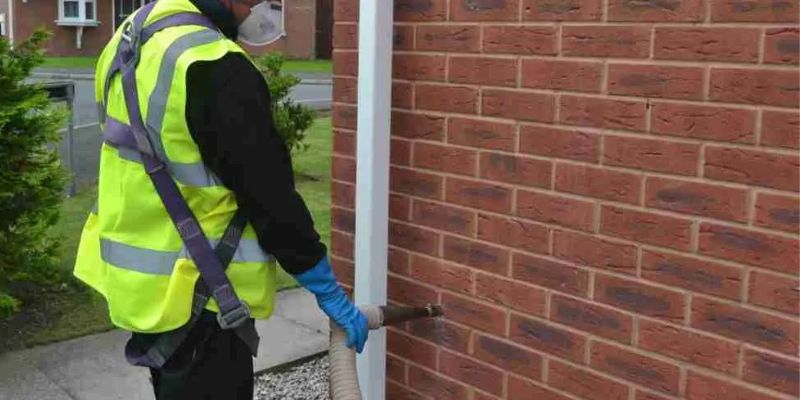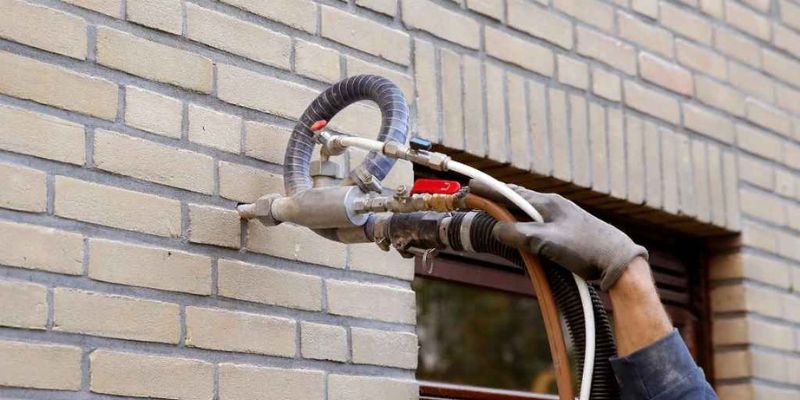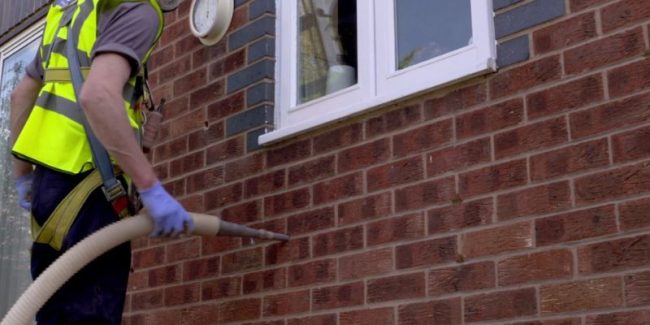Energy bills in Ireland can be high, especially during the cold and wet winter months. One of the most effective ways to keep your home warm and reduce heating costs is by installing cavity wall insulation. Many Irish homeowners are now choosing this method because it is affordable, long-lasting, and makes a big difference in comfort levels.
In this article, we will explain what cavity wall insulation is, how it works, its benefits, and why it’s a smart investment for homes in Ireland.
What is Cavity Wall Insulation?
Most homes built in Ireland after the 1920s have cavity walls. A cavity wall is made of two layers of brick or block with a small gap (or cavity) between them. This gap can allow heat to escape easily, which means your home loses warmth faster and your heating system works harder.
Cavity wall insulation is the process of filling that gap with insulating material, such as mineral wool, polystyrene beads, or foam. This material acts as a barrier to heat loss, keeping warmth inside your home during winter and blocking excess heat in summer.
How Does It Work?
Without insulation, heat moves quickly through the walls and escapes outdoors. With cavity wall insulation, the added layer inside the cavity slows down heat transfer. This means your home stays warmer for longer with less heating required.
Professional installers drill small holes in the outside walls, blow in the insulation material, and seal the holes. The process usually takes only a few hours for an average-sized home.
Benefits of Cavity Wall Insulation in Ireland

1. Lower Energy Bills
Heating is one of the largest household expenses in Ireland. By reducing heat loss through your walls, cavity wall insulation can cut your heating costs by up to 35%. Over time, these savings add up, making the installation pay for itself.
2. Better Comfort
Insulated walls keep your home warmer in winter and cooler in summer.
3. Reduced Carbon Footprint
By using less energy to heat your home, you also reduce carbon emissions. This is a simple step towards a greener lifestyle and helps Ireland meet its environmental goals.
4. Quick and Non-Disruptive Installation
The process is quick, often completed within a day. There’s no need for major renovations, and disruption to your daily routine is minimal.
5. Increased Property Value
Homes with good insulation have a higher BER (Building Energy Rating) score in Ireland. A better BER rating can increase the value of your property and make it more attractive to buyers.
Why Cavity Wall Insulation is Perfect for Irish Homes
Ireland’s weather is known for being cold, wet, and windy for much of the year. Without proper insulation, homes lose heat quickly, making heating systems work harder and increasing costs.
Cavity wall insulation is particularly effective in Ireland because:
-
Many homes already have cavity walls, making the installation straightforward.
-
The insulation materials used are designed to handle Ireland’s damp climate.
-
Energy savings are noticeable almost immediately, especially in winter.
Costs and Savings
The cost of cavity wall insulation in Ireland depends on the size of your home, the type of insulation used, and the installer’s rates. On average, the cost can range from €800 to €2,000.
While this may seem like an investment, the annual savings on heating bills often range from €200 to €400. This means the insulation can pay for itself in just a few years. Additionally, there are government grants available through the Sustainable Energy Authority of Ireland (SEAI) that can help cover part of the cost.
Government Grants and Support
The SEAI offers grants for energy-efficient home improvements, including cavity wall insulation. Homeowners can receive financial support to make the upgrade more affordable. This makes it easier for families to take action without worrying about the full cost upfront.
It’s a good idea to check the SEAI website or speak to an approved installer for up-to-date grant information.
Choosing a Professional Installer

For the best results, it’s important to hire a professional, SEAI-approved installer. They will ensure:
-
The correct insulation material is used for your wall type.
-
The installation is done properly to avoid moisture problems.
-
You receive the necessary paperwork for your BER rating and grant claims.
Avoid DIY insulation for cavity walls, as incorrect installation can lead to dampness, mould, and reduced effectiveness.
Conclusion
Cavity wall insulation is one of the simplest and most cost-effective ways to improve energy efficiency in Irish homes. It helps lower energy bills, makes your home more comfortable, and reduces environmental impact.
With available grants from SEAI and quick installation, now is the perfect time to consider upgrading your home’s insulation. Not only will you save money, but you’ll also enjoy a warmer, more energy-efficient home all year round.
FAQs
1. How do I know if my home has cavity walls?
Homes built after the 1920s in Ireland often have cavity walls. You can check by looking at the brick pattern or asking a professional for an inspection.
2. Can cavity wall insulation cause dampness?
When installed correctly by a professional, modern insulation materials are designed to prevent dampness and allow walls to breathe.
3. How long does installation take?
Most installations are completed within a few hours for an average-sized house.
4. Is there any financial help available?
Yes, the SEAI offers grants to help cover the cost of cavity wall insulation for Irish homeowners.

